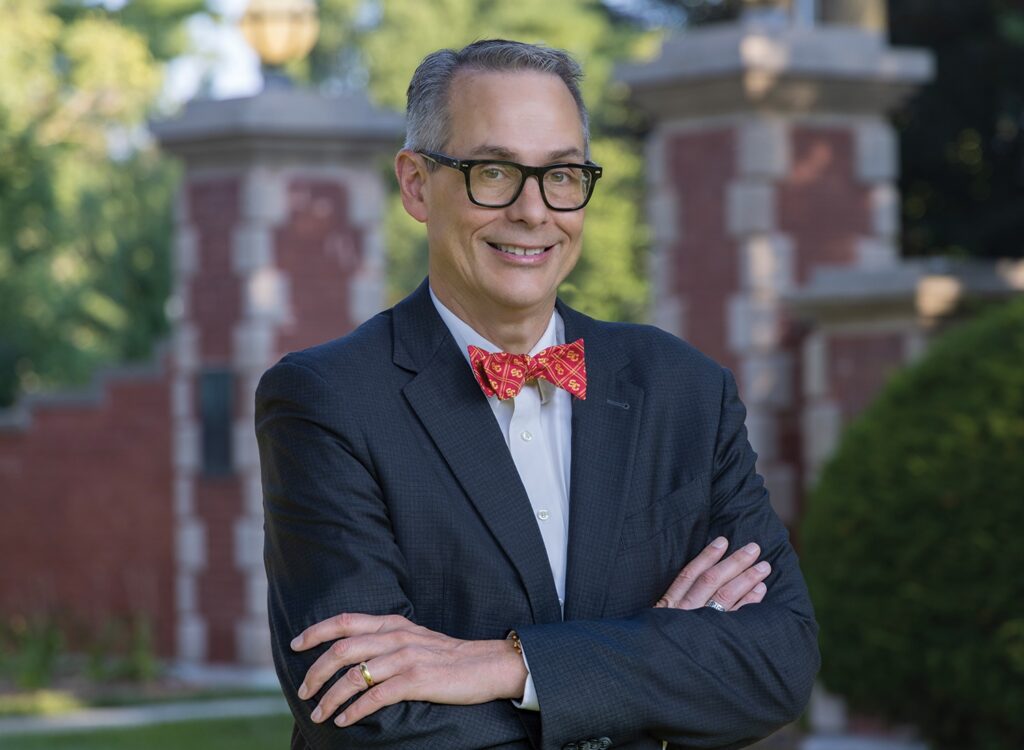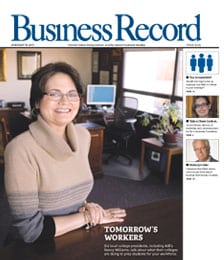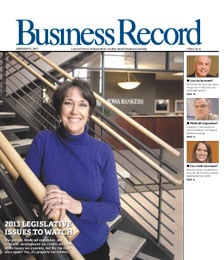Branstad brings skills and contacts to DMU

Former Gov. Terry Branstad, who held the top post in Iowa’s government longer than any other person in the state’s history, is settling in at his new role as president of Des Moines University at a key time in the school’s 105-year life.
DMU, the nation’s second-oldest training ground for osteopathic medicine, is currently at work on a new $23 million Student Education Center, the most expensive construction project in its history. It is forging closer ties with Central Iowa companies and making efforts to expand its research capabilities, an unusual step for a private osteopathic school, to attract brighter faculty members and students and ultimately win more grant money.
Indeed, the school’s leaders, like most at universities across the nation, are focusing more of their attention on raising money to improve facilities and recruit top students. Officials are hoping to wrap up a $13 million fund-raising campaign by the end of the year, the proceeds of which will be used to help pay for the center, fund new scholarships and hold tuition increases down. So far it has raised $11 million.
For Branstad, who will be 57 years old next month, the role is a completely new one. He was formally trained as an attorney and in 1972 was elected to the Iowa Legislature, beginning a 26-year career in politics that included a stint as lieutenant governor under Gov. Robert Ray before he was elected governor in 1982.
“This is a big change for me,” Branstad said. “I’ve spent most of my life in public service and now I am president of a school that focuses on health care.”
Branstad, who was installed as president in August, succeeds Richard M. Ryan Jr., who held the position for six years and is credited with bringing stability to DMU, boosting its credibility in the eyes of faculty, students and the community, and laying the groundwork for the both the Healthy Investments capital campaign and the construction of the Education Center.
Officials are hopeful that Branstad can build on Ryan’s work, extending the university’s reputation and helping to raise money.
Branstad’s experience in government, his managerial talents and the deep Rolodex that he built over 16 years as governor, which included stints as chairman of the Republican Governors Association, make him a potentially invaluable asset to the school. He serves on the boards of such Iowa companies as Featherlite Inc. and Advanced Analytical Technologies Inc. He is one of three public members of the American Institute of Certified Public Accountants.
“The university has a great message and great substance,” said Dr. Larry Baker, a member of the school’s Board of Trustees and medical director of the emergency services at Iowa Methodist Medical Center and Iowa Lutheran Hospital. “Gov. Branstad will be able to get that message out, not only to Iowa but beyond the state. We need to get our story out effectively so that avenues of funding for what we’re trying to accomplish aren’t threatened.”
To attract more funding, DMU began working five years ago to expand its research capabilities. To that end, it has formed a partnership with Kemin Industries Inc., and Branstad said the emphasis on research would continue.
The school is developing new programs to care for an aging population through the Geriatric Education Center, for which it received a $1.8 million grant from the federal government last month, according to Dr. Kendall Reed, dean of the College of Osteopathic Medicine and Surgery and a surgical oncologist at Mercy Medical Center. The center will train students and professionals to better care for older citizens.
Des Moines University is also part of an effort called the Chronic Care Consortium, in which it is partnering with Mercy Medical Center, Iowa Health-Des Moines and such businesses as the Iowa Farm Bureau Federation to find solutions for long-term diseases including diabetes and heart failure. The school has received about $600,000 for that program from the state, Reed said. Future programs could include a new school for ophthalmology, Branstad said.
At the same time, DMU has been tinkering with its curriculum to improve learning and bring some programs up to date. Those changes, which include a shortened term and more group work, may not be working.
Over the past five years, an average of 95 percent of first year students had passed the standardized exams known as boards that are required by the medical profession. Last year, after most of the curriculum changes had been implemented, the passage rate dipped to 90.9 percent, still above the national rate of 90 percent. School officials say they aren’t sure why rates slipped, but that they aren’t happy that they did and are rethinking some of the modifications.
“We have always been above average and I don’t want to be average,” Reed said. “We’re asking ourselves if this is something we did or an aberrancy. It’s not good enough.”
Physically, the biggest change at the school is the ongoing construction of the 130,000-square-foot Student Education Center. The three-story building, located on the site of the former St. Joseph’s Academy, will house a commons area, a large library, a fitness center, an auditorium, a dining area, office space, lecture halls and additional classroom space, which has been in short supply in recent years, according to Sarah Todd, a DMU spokeswoman.
“We listened to what students were saying and tried to come back and create a building that would have almost a family room atmosphere, a place where you can go to class, stay on campus, relax, study and exercise” said Steve Grasso, a project manager with Neumann Bros. Inc., the general contractor for the building. The building is scheduled for completion in spring 2005.
Des Moines University, whose 1,068 students make it larger than the state’s only other medical school at the University of Iowa, is also reaching out to its 7,000 alumni. It held a recent event in Cedar Rapids for graduates and was able to attract 200 alumni during a luncheon it hosted last week at the American Osteopathic Association’s annual conference in New Orleans.
“Gov. Branstad has a chance to make us much more visible in the community and I think he will do just that,” Reed said. “There are a lot of people in the community who don’t know us, and his connections, both politically and outside of politics, are tremendous.”







